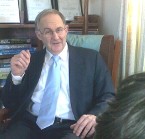Merv Edmunds, principal therapist at Human Givens Australia, has retired from private practice. He does however, continue his speaking and consultancy work related to the promotion and training in the Human Givens approach. He also takes some clients on a pro bono basis for initial consultation. For further therapy he asks that a donation be made to either The Smith Family Childrens Charity or UNICF Ukraine appeal. One of the most important factors underpinning successful therapy is the nature of the client therapist interaction. The client needs to feel confidence in the qualifications and the experience of their therapist, but more importantly they need to feel at a deeper level that their therapist is living the sort of grounded joy-filled life they seek for themsleves. See Merv's bio Merv Edmunds and also his BLOG.
Therapeutic Approach
Depressed people wake up tired. This suggests disturbed sleep patterns and the likelihood of a mental and physical unpreparedness for the new day.
A better understanding of this disturbed sleep and what causes it followed the 1997 publication explaining the function of dreaming, or more especially the phase of sleep when most dreaming occurs, rapid eye movement or REM sleep. The explanation has led to new insights into depression and simple and effective ways to lift it.
The Human Givens therapeutic technique deals with the depression triggers - excessive worrying - and models effective sleep cycles to restore a better balance between the high-energy REM sleep and restorative slow wave sleep.
A typical session follows these steps:
- The therapist will lower emotional arousal to allow the depressed person to access his or her higher cortex instead of the limbic or emotional brain. Detailed history-taking is not necessary, and indeed can prolong the anxious emotional state. The therapist will focus on what emotional needs are not being met, or what resources are not being used effectively, to get to the real cause of the worry.
- The therapist will help the patient create new positive expectations to break the worry cycle. Exploration of past achievements, useful qualities, and what previously brought pleasure to the person will assist in setting positive achievable and needs-oriented goals. Goals or expectations that can be fulfilled in the waking state rather than adding pressure on the REM sleep phase.
- The depressed person will be encouraged to re-focus attention away from negative unfulfilled expectations toward getting emotional needs met. Physical activity, doing things that once gave the person pleasure and fulfillment, building relationships, and the development of problem solving skills are crucial dimensions of a healthy emotional state.
- The therapist will use guided imagery to model an effective dream process that discharges unfulfilled expectations (worry) and replaces ineffective patterns of thinking with hope. The patient will metaphorically rehearse new behaviours and feel motivated because this process deals with worry at its emotional pre-conscious source.
Variations of this approach for lifting depression have been found to be equally effective for reducing anxiety, freeing people from post traumatic stress, and overcoming compulsive and addictive behaviours.

There are several members of the AACHP who have completed the Certificate of Applied Psychotherapy who are now available for consultation. Contact AACHP
Also, two UK-trained Human Givens Therapists in Australia: Annie Gurton Fiona Edmonds
0423 632 657
Sydney NSW
Annie Gurton
Send Email
0404 401 691
Brisbane QLD
Send Email
